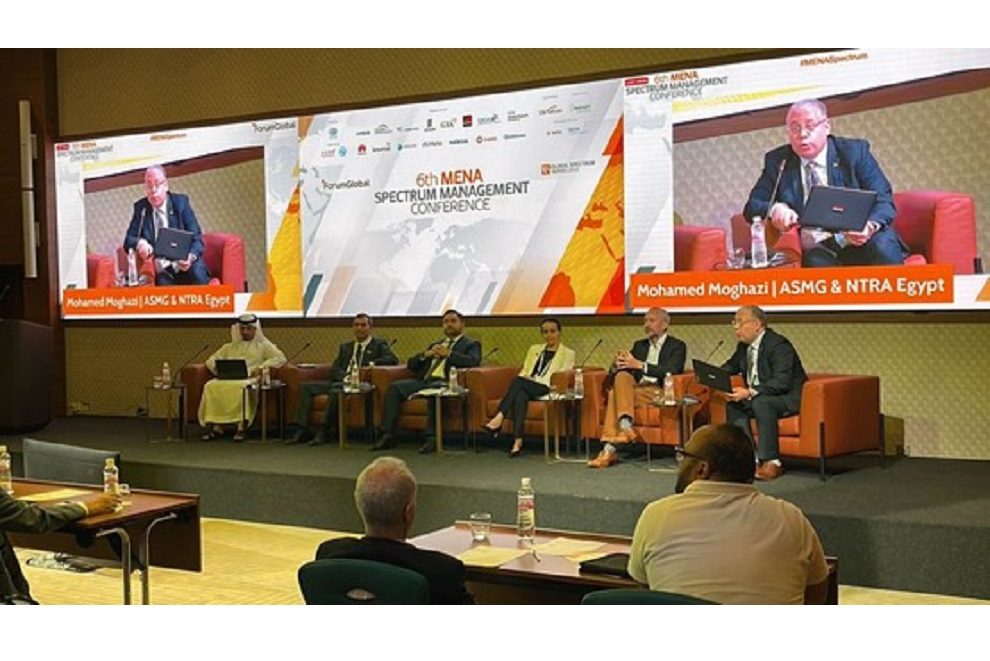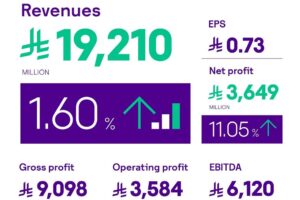In less than a year, the Middle East and North African (MENA) countries will have to make critical decisions as to how to allocate precious spectrum, particularly balancing the needs of licensed (4G and 5G) and unlicensed (WIFI) ecosystems. The 6th MENA Spectrum Management Conference took place last week to provide a platform for these discussions.
Next year’s World Radiocommunication Conference 2023 (WRC-23) has an agenda item to study 6GHz targeting IMT identification of 6425-7125 MHz’s The conference seeks to encourage governments and regulators to allocate RF spectrum consistently across borders, enabling global roaming, interoperability and global markets for telecom equipment.
Without a global consensus, governments are taking diverging steps around spectrum allocation. China, for instance, has announced it will issue the entire 1200MHz in the 6GHz band for 5G. Europe has split the band, with the upper part 6425-7125 MHz studied for IMT under WRC23 Agenda item 1.2, while the lower 500MHz tranche 5925-6425Mhz is made available for WIFI. Africa and parts of the Middle East are following a similar approach. Other countries in the region are awaiting WRC-23 before deciding on a plan of action. At the MENA Spectrum Management Conference, Olfa Jammeli, General Director of the National Agency of Frequencies (ANF) Tunisia, announced that the North African country has postponed considering new microwave requests until the end of WRC-23 to evaluate the results of the studies.
The decisions regulators make will tremendously impact the evolution of 5G and, therefore, the digital economy. New data from GSMA Intelligence shows that MENA’s diverse economies will benefit greatly from 5G, with mid-band expected to contribute $16 billion in additional GDP in 2030, or 0.35% of the region’s GDP. At the MENA Spectrum Management Conference, Mohammad Al Janoobi, Radio Communication Engineer, Spectrum Management Department, Saudi Communications and Information Technology Commission termed spectrum as a key enabler for the Kingdom’s Vision 2030, cutting through different sectors beyond ICT to include space, military, security and more.
The GSMA has advocated 6GHz as the primary band for the future of 5G. The Association, which represents the interests of mobile network operators worldwide, says an average of 2 GHz of mid-band spectrum is required in the 2025-2030 timeframe for 5G. In MENA, that goal leaves a shortfall of 0.85 GHz beyond today’s assignments.
The GSMA Intelligence analysis shows that under spectrum constrained to today’s assignments, up to 40% of the positive economic impact could be lost. Things will get worse if the spectrum is limited to current levels while demand for services grows as expected. In such a scenario, increased network congestion and deployment costs will stifle 5G while network quality and speed suffer, limiting 5G adoption and its economic impact.
Further harm will be done if wireless encroaches on the mid-band. Experts say allocating a 6GHz band for unlicensed/WIFI will lead to an imbalance in mid-bands assignment to unlicensed versus licensed applications and represent a significant opportunity loss for 5G technologies and economies in the future. Further, such a decision would be practically irreversible when 5G picks up speed and requires more capacity.
The WLAN industry is clamoring for the 6GHz band. The WIFI Alliance, which represents wireless device manufacturers, says 6GHz addresses WIFI spectrum shortage by providing contiguous spectrum blocks to accommodate 14 additional 80 MHz channels and seven additional 160 MHz channels, which are needed for high-bandwidth applications that require faster data throughput such as HD video streaming and VR.
However, evidence shows that, in most markets, WIFI limitations are not based on limited spectrum. The user experience is often constrained by broadband fixed access network capacity and penetration limitations, poor WLAN network planning, or low-end WI-FI APs with poor design. Once the fixed network is reinforced (e.g., fiber, FWA), new technology solutions rather than new spectrum can ensure high-speed connectivity.
Therefore, regulators must weigh the decisions carefully when allocating frequencies. Supporting IMT identification allows them to make the right decision after WRC-23, depending on their specific situation.
The MENA region is increasingly reliant on digital services in a post-pandemic world. Therefore, regulatory policies supporting the ICT ecosystem’s growth will be crucial to incentivizing the continued rollout of telecoms infrastructure. Such investments will be vital to unlocking the value of the MENA mobile economy, which will unleash tremendous new opportunities in eCommerce, digital finance, public services and more.
Decision time looms for MENA regulators as spectrum specifications draw near












